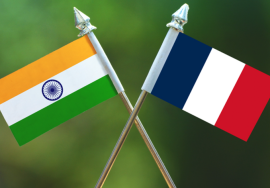In the LIC IPO Process, a Snapshot of India’s Political Economy
[ad_1]
Mumbai: The Central government is no stranger to burning its fingers in the markets. Rewind to 2017, when two state-owned players – the New India Assurance company and the General Insurance Company – were listed on the bourses.
Both of them debuted at a discount of 6-7% and since their listing in the second half of 2017, the duo has blighted investor wealth like a swarm of locusts. That’s not nearly as hyperbolic as it sounds: New India Assurance, which listed at Rs 750, currently trades at Rs 110. GIC, which listed at Rs 850, is running at Rs 123.
Market experts signal that the fate of New India Assurance and GIC will not be that of LIC. For one, the valuations ascribed to the LIC IPO are much more attractive. At 1.1 times FY22 price to embedded value, the valuation is far more attractive compared to private players – whose market share is much smaller compared to LIC, but their valuations figure in the ballpark range anywhere between 2.8 to 4 times FY22P/EV.
The Corporation is offloading 3.5% of its stake in the IPO. The price band has been fixed at Rs 902-949 per share. At the upper band, the IPO is valued at Rs 21,000 crore. The initial public offering opened on May 4 and by the end of the third day had been subscribed 1.38 times with strong participation from retail investors who are getting a discount of Rs 45 while policyholders are bagging a discount of Rs 60.
Out of the total offer for sale, 10% of the shares have been reserved for policyholders, 0.7% for LIC employees and 31.25% for retail investors. If an investor falls under any of the two categories, they are permitted to apply for shares in lots of 15 to the extent that the overall bid amount does not exceed Rs 2 lakh.
LIC’s (declining) brute domination
The Indian life insurance industry had only one player – LIC – from 1956 to 2000. However, post-privatisation in 2000, private players started entering the industry. By 2000-01, four private players had set up operations. HDFC Standard Life was the first private company to enter the industry in 2000-01, followed by ICICI Prudential Life, Max Life Insurance and Aditya Birla Sunlife Insurance in the same year. Only four new private players entered between 2002 to 2005, post which there was a surge again, with eight players setting up business till 2009.
However, none of the 23 private players in the domestic market can pose a real challenge to LIC’s brute domination of the segment.
LIC has been providing life insurance in India for more than 65 years and is the largest life insurer in India, with a 64.1% market share in terms of premium, a 66.2% market share in terms of new business premium, a 74.6% market share in terms of the number of individual policies issued, an 81.1% market share in terms of the number of group policies issued for FY21, as well as by the number of individual agents, which comprised 55% of all individual agents in India as at end March 2021.
While LIC’s authority is unchallenged, there is some cause for concern: LIC has been steadily ceding market share to private insurers, albeit marginal. Private sector insurance companies have been growing faster than the state-backed insurer and gaining market share since their entry into the Indian insurance industry in 2001. From FY16 to FY21, the total premium for life insurance private sector players in the life insurance industry in India increased at a CAGR of 18% while LIC’s total premium in India increased at a CAGR of 9% for the same period.
For FY19, FY20, FY21 and the six months ending September 30, 2021, LIC’s market share in terms of total premium in the Indian insurance sector has been eroding from 66.4% to 66.2%, 64.1% and 63.6%, respectively. Naturally, there is no assurance that LIC will not lose out on further market share.
Despite private players eating into LIC’s market share, its leadership position is quite secure. What’s more, given LIC’s long legacy in India, it still remains the first go-to brand for insurance in India, notwithstanding the fact that LIC’s premiums are often on an average steeper by 30-70% across different insurance products.
Where does LIC stand globally?
Nowhere in the world is the difference in market share between the largest and the second largest life insurer as stark as in India, with the second largest player having only 8.0% market share of Gross Written Premium (GWP) compared to LIC’s market share of 64.1% as of FY21. LIC’s market share in India is unparalleled globally, with no other life insurance player in any other country enjoying such a large market share.
In China, for example, the life insurance market is dominated by Ping An Insurance and China Life Insurance Company, with market shares of 21% and 20% respectively. In Malaysia, AIA BHD and Great Eastern Life Insurance – the two largest life insurers – cumulatively accounted for approximately 37% of premiums garnered by the industry in CY 2020. In Japan, the largest life insurer, Nippon Life Insurance Company, has a market share of 16.2% as of CY 2020.
LIC ranks fifth in terms of net premium earned, with premium of $56 billion in FY21. The Corporation is also the eighth largest life insurer in terms of assets amongst global insurance players.
It is in conscious recognition of the pivotal role that LIC plays in the lives of millions of Indians which led a platform called the Peoples’ Commission on Public Sector and Public Services to raise a number of red flags vis-a-vis the LIC listing. The platform criticised the government’s claim that disinvesting from LIC will make it efficient and profitable, arguing that the efficiency of a life insurance company should be measured by claim settlement performance.
“For the record, the LIC has been settling more than 99% of the claims. The fact that the percentage of claims repudiated by LIC is far less than its private sector rivals is proof that it needs no private participation to improve its performance,” the platform said.
[ad_2]
Source link










